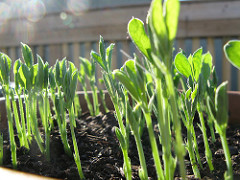Middle school botanists
By Mary Bigelow
Posted on 2017-08-30
 I see many good activities for middle school involving plants, but what if students already did something similar at the elementary level? I don’t want to spend time on duplicate activities or get the eye-roll “we already did this.” —M., Arizona
I see many good activities for middle school involving plants, but what if students already did something similar at the elementary level? I don’t want to spend time on duplicate activities or get the eye-roll “we already did this.” —M., Arizona
I posed this question to a middle school biology teacher. His students came from several elementary schools, so it was hard for him to determine what activities they did at those levels. When he surveyed his students, he found that many had never grown plants from seeds or it was part of a once-and-done observation activity
He turned traditional plant-growing activities into investigations by encouraging additional questions and incorporating scientific practices and crosscutting concepts. For example, he guided students beyond descriptive observations toward a more robust approach to experimental research—variables, experimental and control groups, measurement, graphing, basic statistical analysis. The students shared their data electronically, creating a database of their measurements and discussing discrepant data. They differentiated between observations and inferences when describing their results.
He concluded that embedding new experiences and elaborations within the context of a familiar activity helped students to focus on higher levels of thinking. And for some of his students, the “aha” of watching plants grow was a new experience.
A colleague from an e-mail list suggested Planting Science. It looks like a good resource on science methods and worth browsing even if you don’t formally participate in their projects.
Who knows where a new-found interest in plants will lead? In some schools, future botanists and horticulturists have expanded their investigations into school gardening or hydroponics.
Photo: https://www.flickr.com/photos/creamaster/573423846
Disclaimer: The views expressed in this blog post are those of the author(s) and do not necessarily reflect the official position of the National Science Teaching Association (NSTA).


